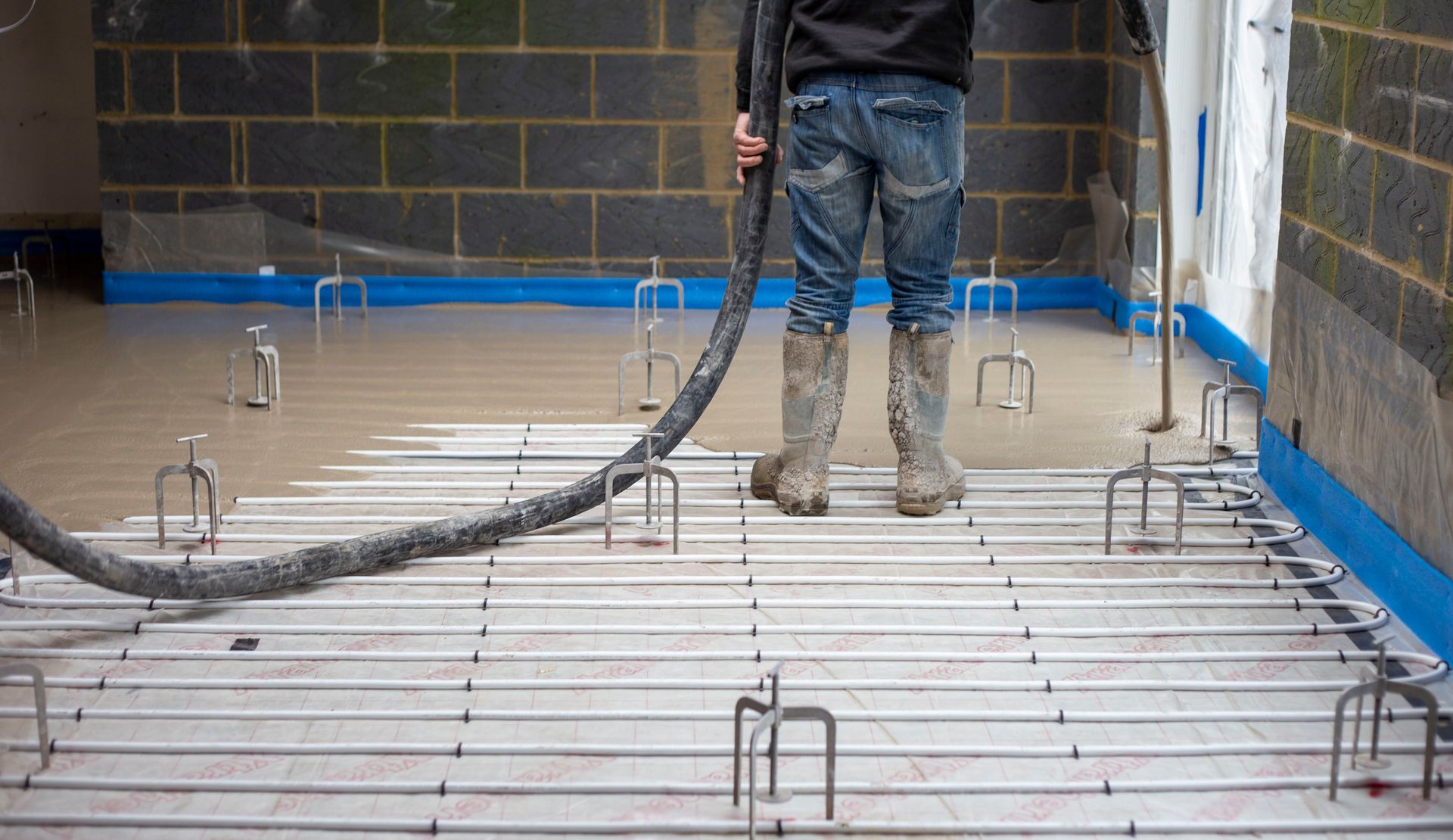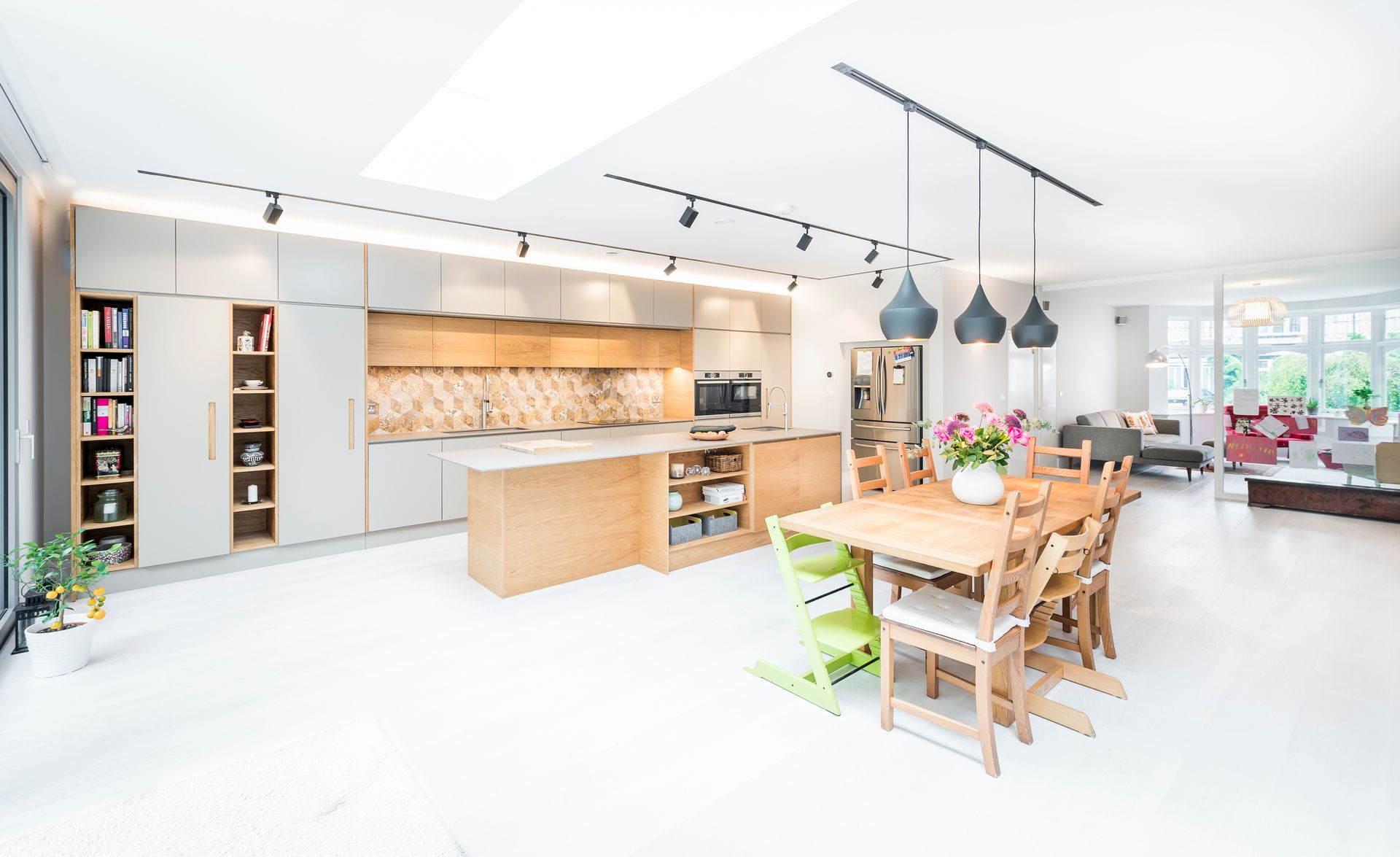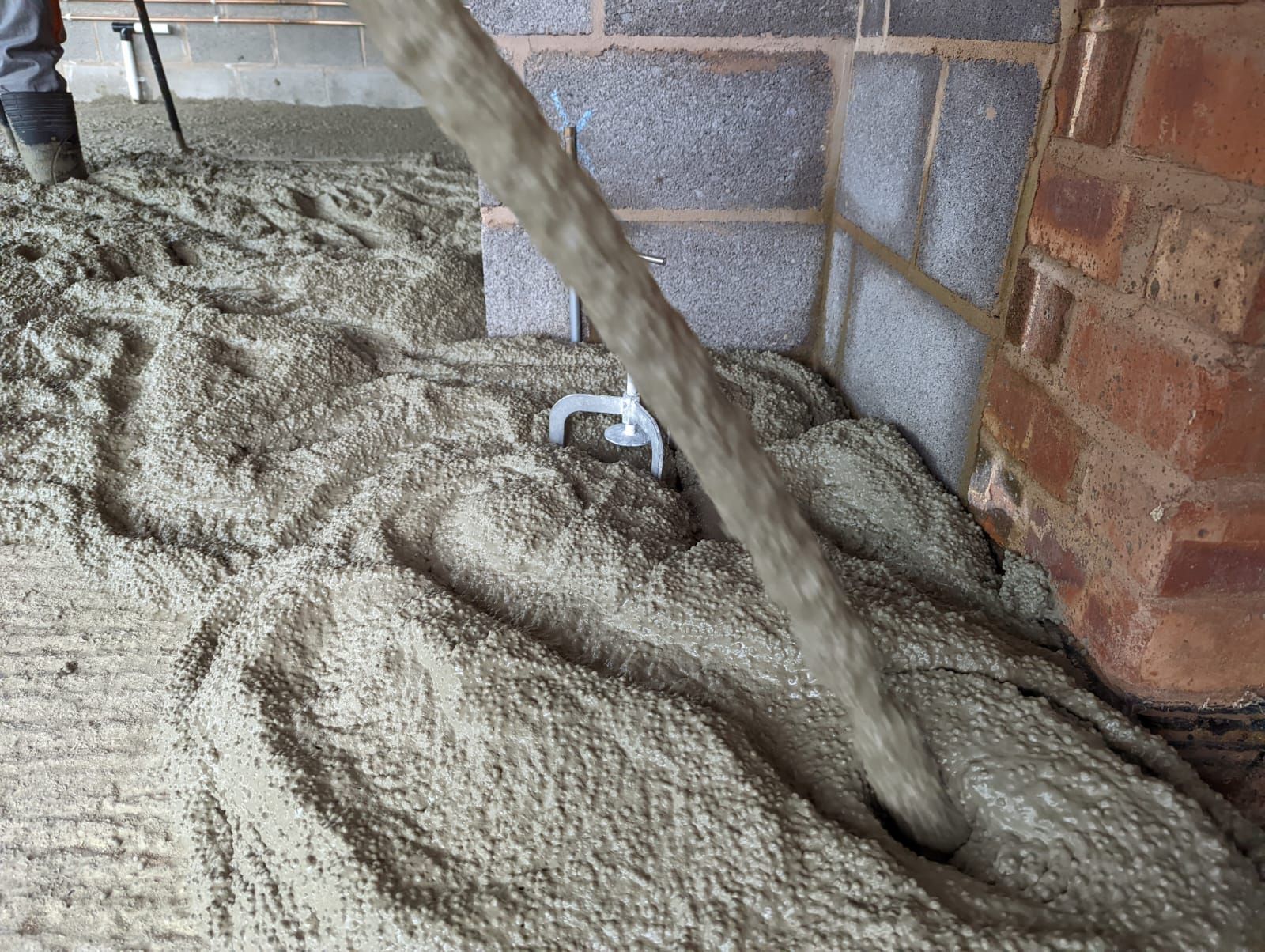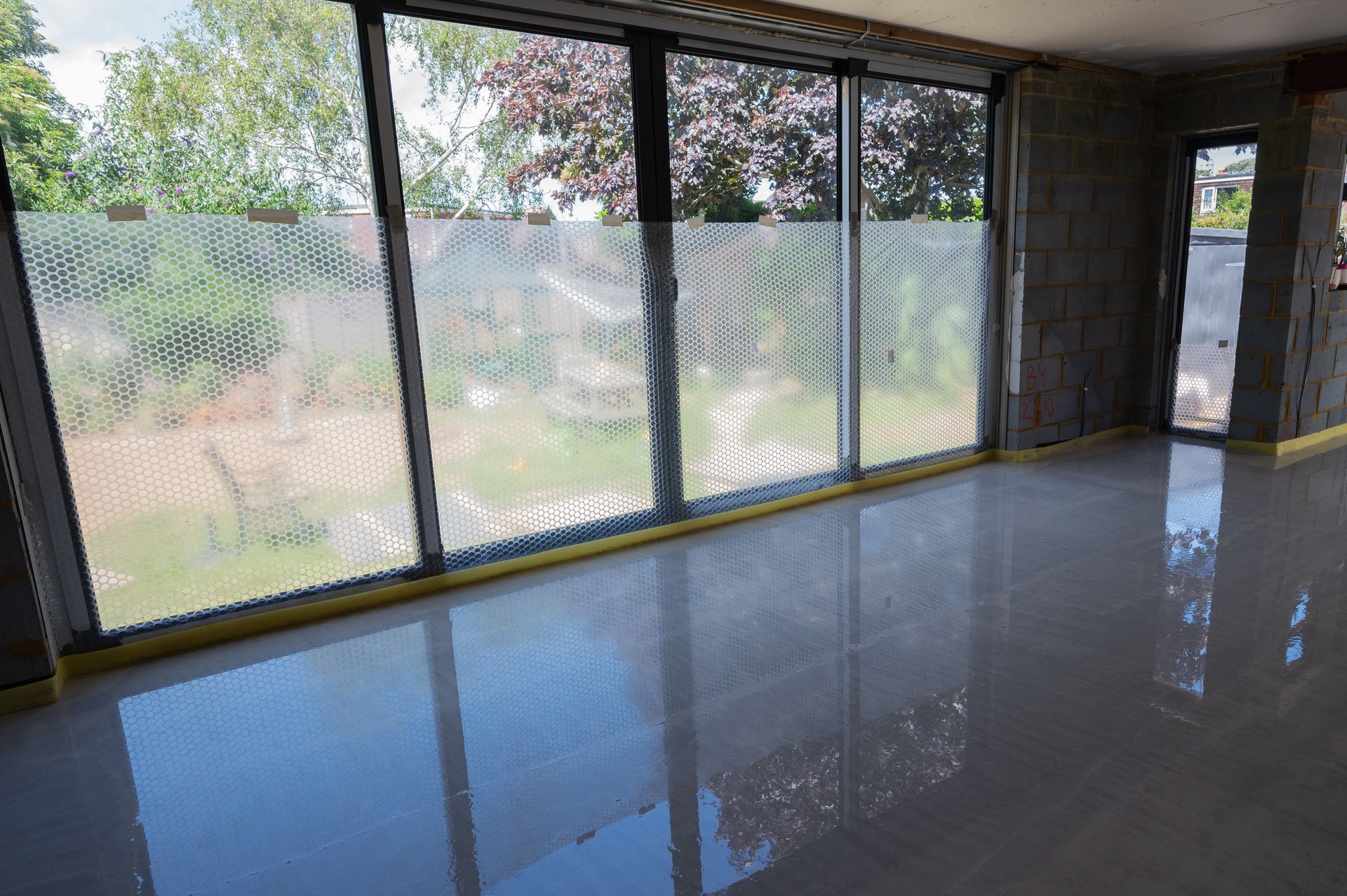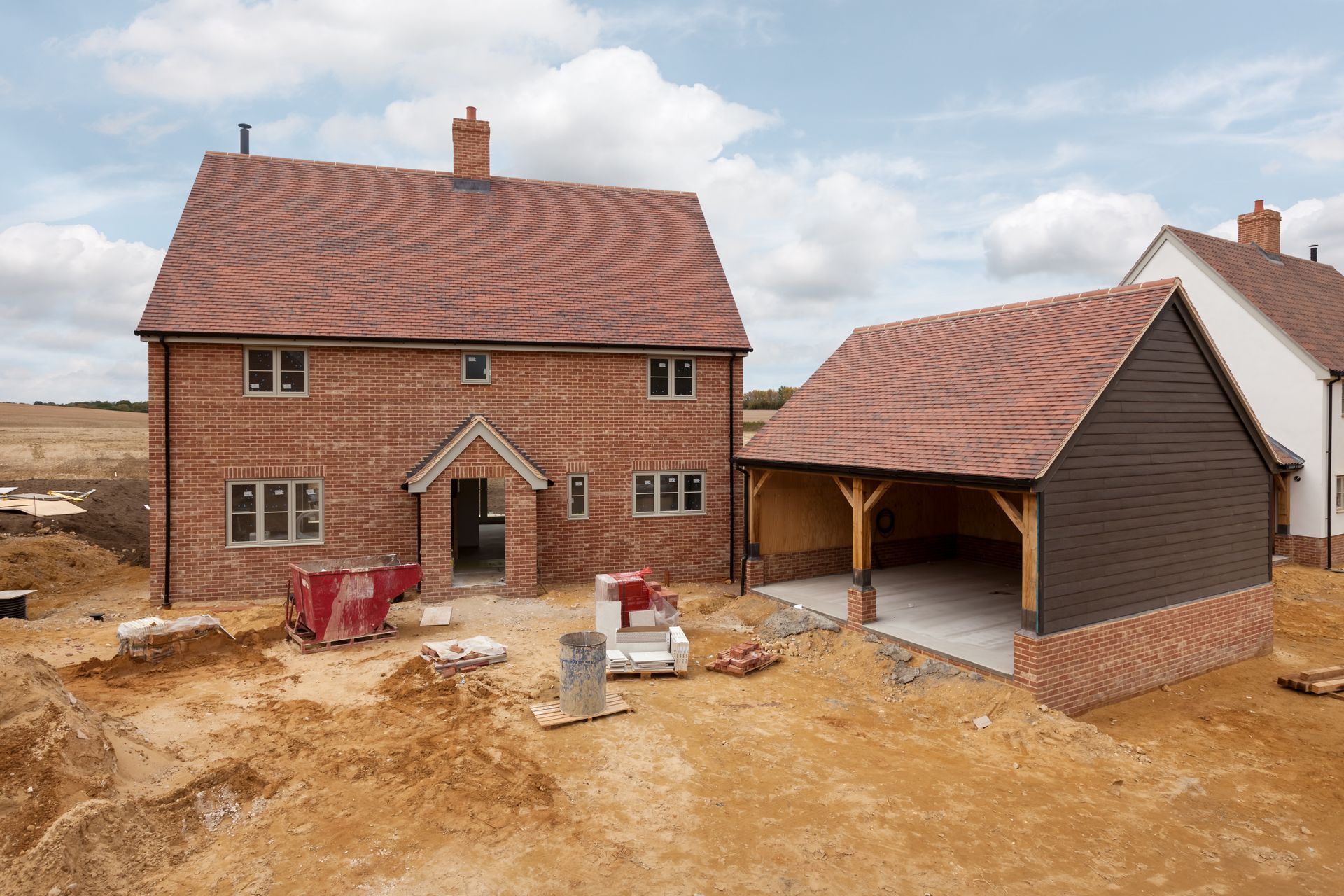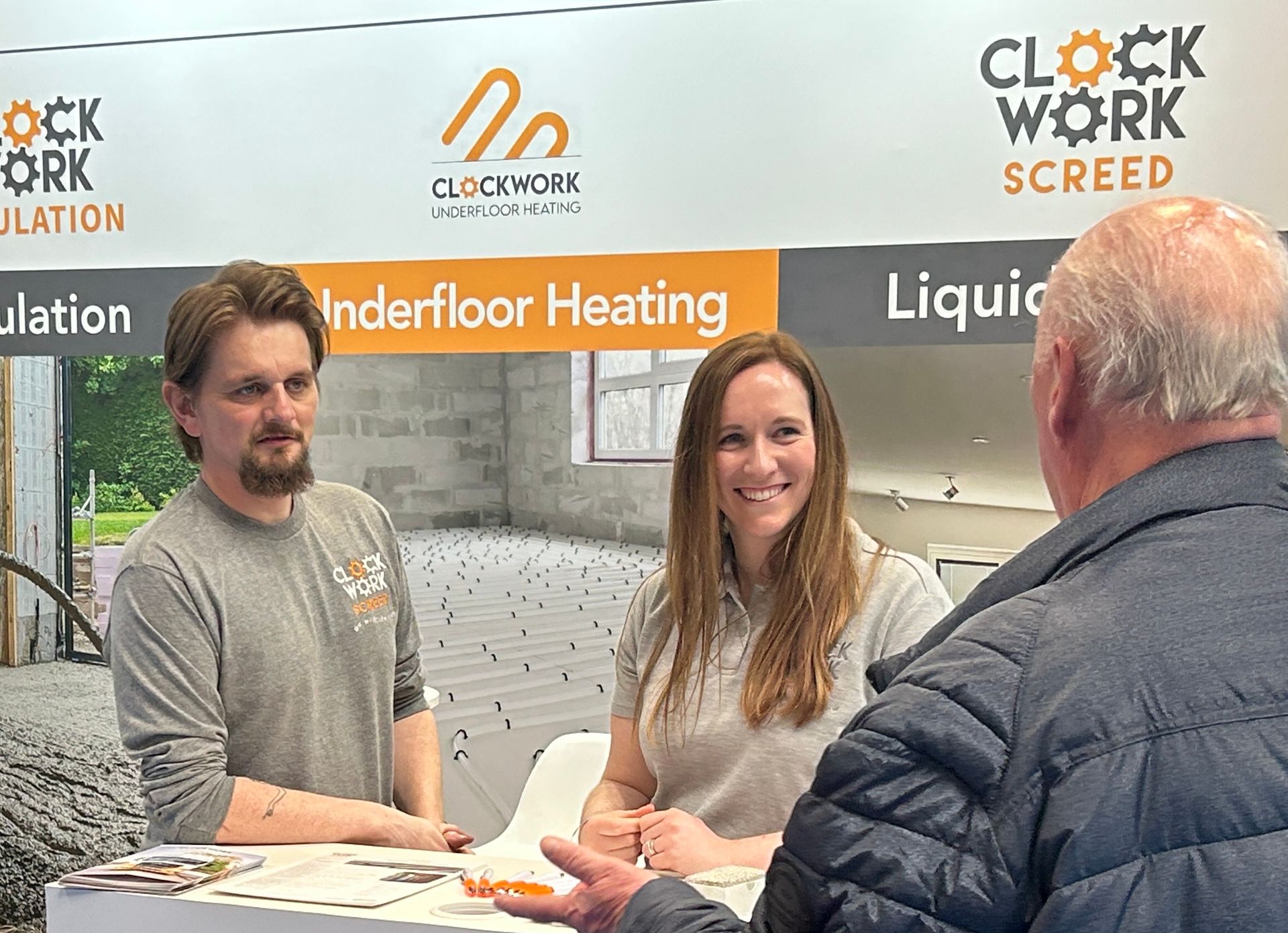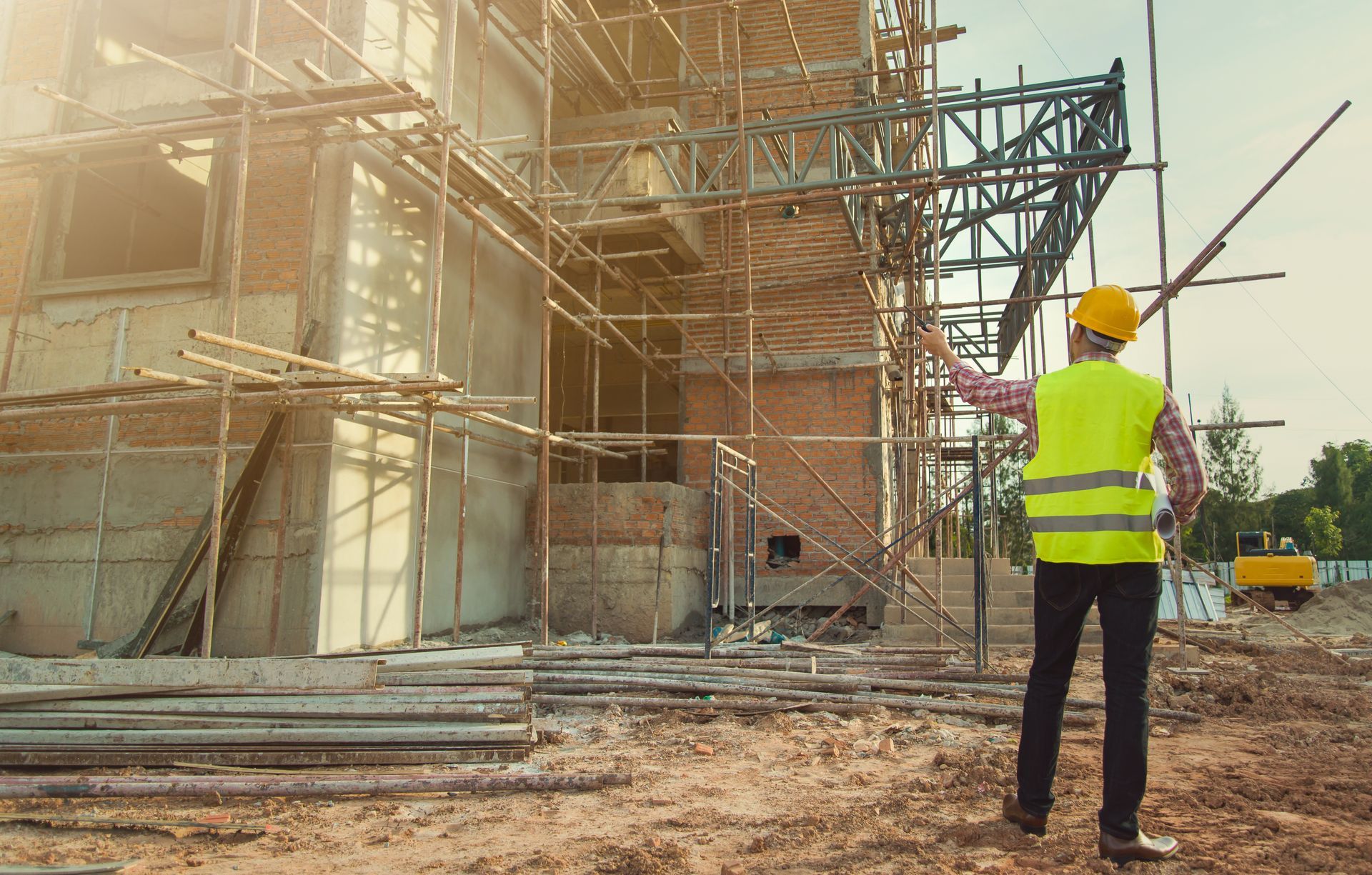Why Modern Liquid Screeds Work Best at 40–50mm Thickness
Why Modern Liquid Screeds Work Best at
40–50mm Thickness
For decades, floor screeds in the UK were almost automatically specified at 75 mm. This became the accepted standard because it suited traditional sand and cement screeds, which needed that level of depth to achieve structural integrity and provide even heat distribution over underfloor heating systems.
But building technology has moved on. Modern cement-based liquid screeds, such as those installed by Clockwork Screed, are designed to perform just as well, if not better, at significantly reduced depths. In most cases, a thickness of 40 mm to 50 mm is ideal.
Why the change matters
The difference between a 50 mm and a 75 mm screed may sound small, but it has a significant impact across a project. Less material means less weight, faster drying times, and shorter build programmes, all without compromising strength or performance. For projects facing tight deadlines or seeking improved energy efficiency, these benefits can be decisive.
At the design stage, many architects still reference the older 75 mm standard simply out of habit. Yet modern liquid screeds, engineered with higher flexural and compressive strength, don’t require this level of thickness. The product chemistry and installation method enable a thinner, more consistent layer across large areas.
Optimised for underfloor heating
When installed over underfloor heating, the depth of covering above the pipes is critical. The heating pipe diameter (typically 16–20 mm) is included in the recommended 40–50 mm depth. The key is ensuring all pipework is fully encapsulated while maintaining a consistent, thin layer of screed above.
A thinner layer of liquid screed acts more responsively as a thermal mass. It conducts and radiates heat quickly and evenly, so the heating system needs to run for less time and at lower flow temperatures. The result is faster warm‑up, improved efficiency and greater comfort for building users.
By contrast, thicker screeds take longer to reach temperature, store more heat than necessary, and prolong the cooling cycle, making them less efficient overall.
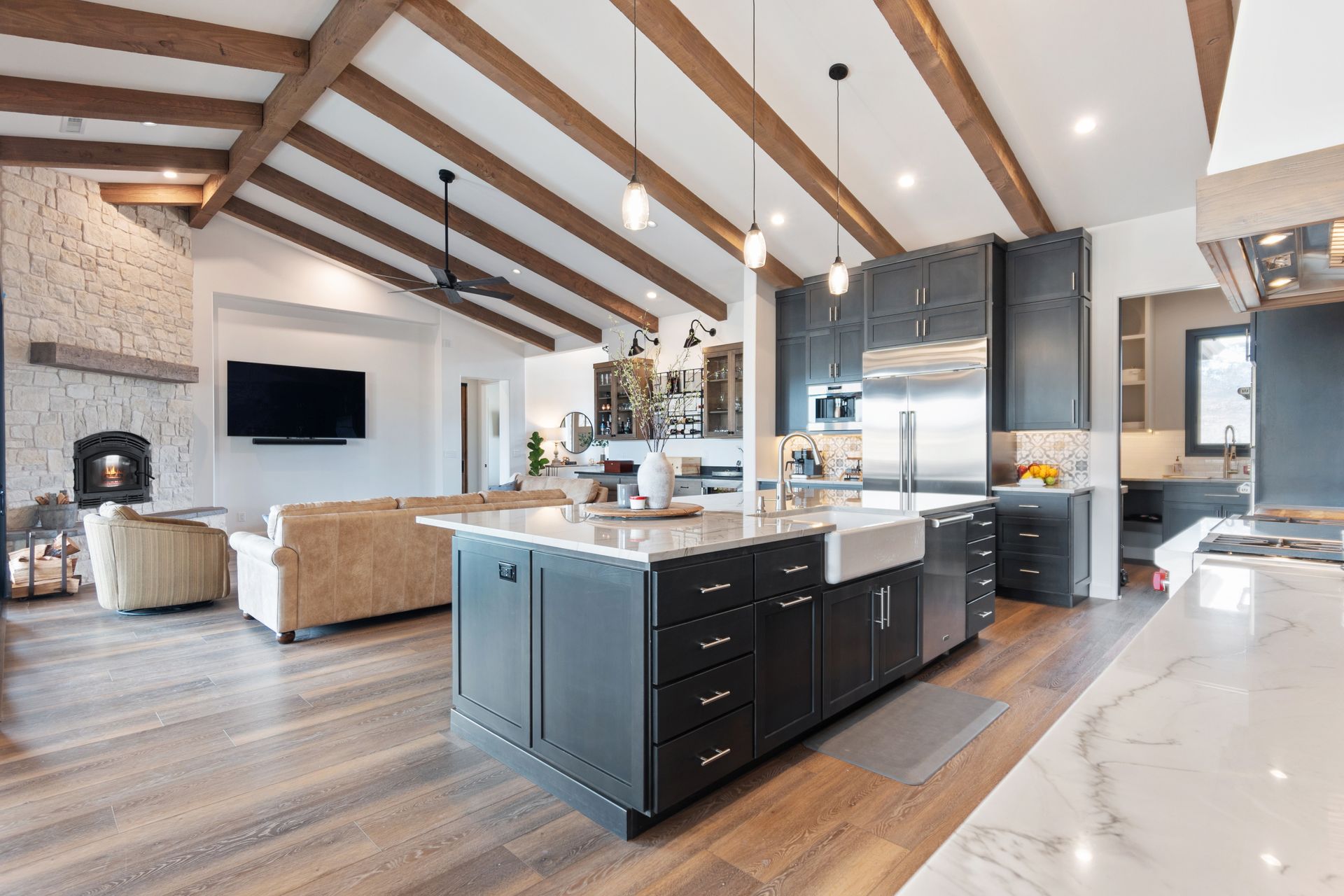

Keeping decent mass while saving material
Although it’s technically possible to go thinner than 40 mm, it’s best to strike a balance between efficiency and substance. A depth of 45–50 mm retains enough thermal mass for even heat distribution while reducing volume and weight significantly compared to the old 75 mm benchmark.
For reference, a 25 mm reduction across a 100 m² floor area equates to almost 2.5 m³ less screed. That’s a substantial saving in material, transport, and carbon output.
Faster installation and drying times
With our mobile screed plants, Clockwork Screed can batch and pour precisely the required volume at the correct consistency directly on site. This method ensures accuracy in depth and eliminates waste.
Because cement-based liquid screeds are self-levelling, they naturally achieve an even surface finish that’s ready to walk on within 24–48 hours. Reducing the thickness reduces the overall drying time, allowing subsequent trades to move in sooner.
Shorter drying times mean less risk of delayed floor finishes and fewer moisture-related issues later on. For high‑turnover residential developments or commercial fit-outs, that time saving translates directly to cost saving.
Specification and best practice
Each project should still be assessed individually, accounting for the floor construction, service depths, and insulation build‑up. We recommend working within a 10 mm tolerance to allow for variation in the base surface.
In general:
- 40–50 mm total thickness (including UFH pipes) gives optimal performance.
- Where no underfloor heating is present, the screed depth can be reduced further while maintaining an even, durable surface.
- Always ensure the sub‑base is clean, stable, and adequately prepared to achieve strong adhesion and uniform results.
Our team regularly works with architects, main contractors and self-builders to determine the most efficient screed depth and mix for each flooring system. Because we produce every batch on site using our automated Transmix vehicles, we guarantee the consistency required for thin-section screed applications.
Sustainable by design
Sustainability isn’t just about what a product contains; it’s about how efficiently it performs. Using less screed reduces transport emissions and material consumption. Producing it fresh on site means zero waste, no shortfalls and no over-ordering.
Coupled with the reduced energy demand of underfloor heating systems embedded in thinner, high-conductivity screeds, the result is a floor solution that’s lighter on the planet and better for budgets.
The shift to smarter specification
As more designers and developers embrace liquid screeds, the industry is gradually moving away from outdated 75 mm specifications. Understanding the technical properties of modern materials allows projects to achieve better efficiency, smoother installation, and improved lifecycle performance.
At Clockwork Screed, we help translate these advances into practical on-site advantages, delivering perfectly level floors that are faster to install, quicker to dry and optimised for heat efficiency.
If you’re reviewing specifications for your next project and want advice on screed depth, composition or underfloor heating integration, contact our team to discuss the right solution for your build.
